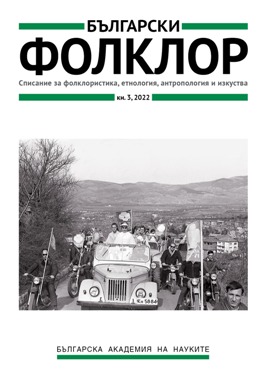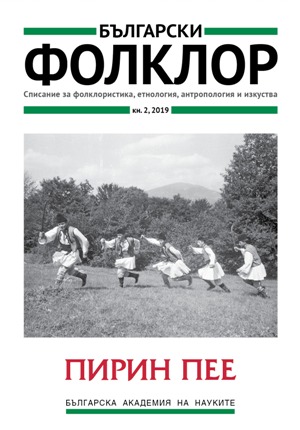
We kindly inform you that, as long as the subject affiliation of our 300.000+ articles is in progress, you might get unsufficient or no results on your third level or second level search. In this case, please broaden your search criteria.

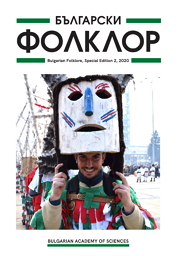
The article describes the National Festival of Folklore in Koprivshtitsa in through the eyes of a particular local community, that of the village of Bistritsa, Sofia region. The study is based on fieldwork conducted in January 2015 at the local community centre. The main method of investigation is the semi-structured interview, which offers local people the opportunity to select the most significant moments in their narratives and to express their own understanding and interpretations of folklore heritage. The authors pay particular attention to the processes of transformation of local tradition into cultural heritage, which became especially visible after the 1930s and the 1940s. The text outlines the processes and means by which the local community presents its culture and understands the necessity of its contemporary safeguarding as a living practice. The influence of local and national cultural institutions is duly marked, including the influence of the local community centre and the National Festival of Folklore in Koprivshtitsa. Special attention is also given to these institutions’ contributions towards the conceptualization of different elements of the respondents’ local culture and the ways in which local culture becomes a resource for the construction of different networks of identities: cultural, local and national. The text also highlights the basic accents and interpretations in the narratives of the respondents who discuss the National Festival; the Festival’s importance as a place for the representation of their traditional village cultural elements; its role in their preservation; the character of the Festival stage and changes to it through the years; as well as the personal experiences of the community members during the Festival.
More...
The dumb blonde figure is very popular in the repertoire of international jokes and is characterized by two main qualities: stupidity and promiscuity. These features are also shared by jokes which have circulated in Bulgaria since the 1990s. Researchers view dumb blonde jokes as a consequence of the increasing presence of women in professional and public life in positions which were traditionally considered ‘male’ spheres. The jokes are a reaction to radical transformations in social values and also a specific response to problematized male identities. Over the course of time, the image of the blonde has undergone certain changes as the sexual innuendo has faded and stupidity has become the main object of ridicule. In this way, the blonde has become a version of the classical personage of the fool whose role has always been substantial in the processes of self-identification, whether they be national, social, ethnic, local, or regional in character. In this respect, the blonde represented in such jokes has the potential to become a universal archetype, since her image combines two major identity markers: gender, and more generally, cultural affiliation.
More...![Tsvetelina Dimitrova. Popular History between the Oral and the Written. Sofia: Prof. Marin Drinov Publishing House of BAS, 2013. 218 p.[Цветелина Димитрова. „Народната история“ между устност и писменост. София: Издателство на БАН „Проф. Марин Дринов]](/api/image/getissuecoverimage?id=picture_2020_64862.jpg)


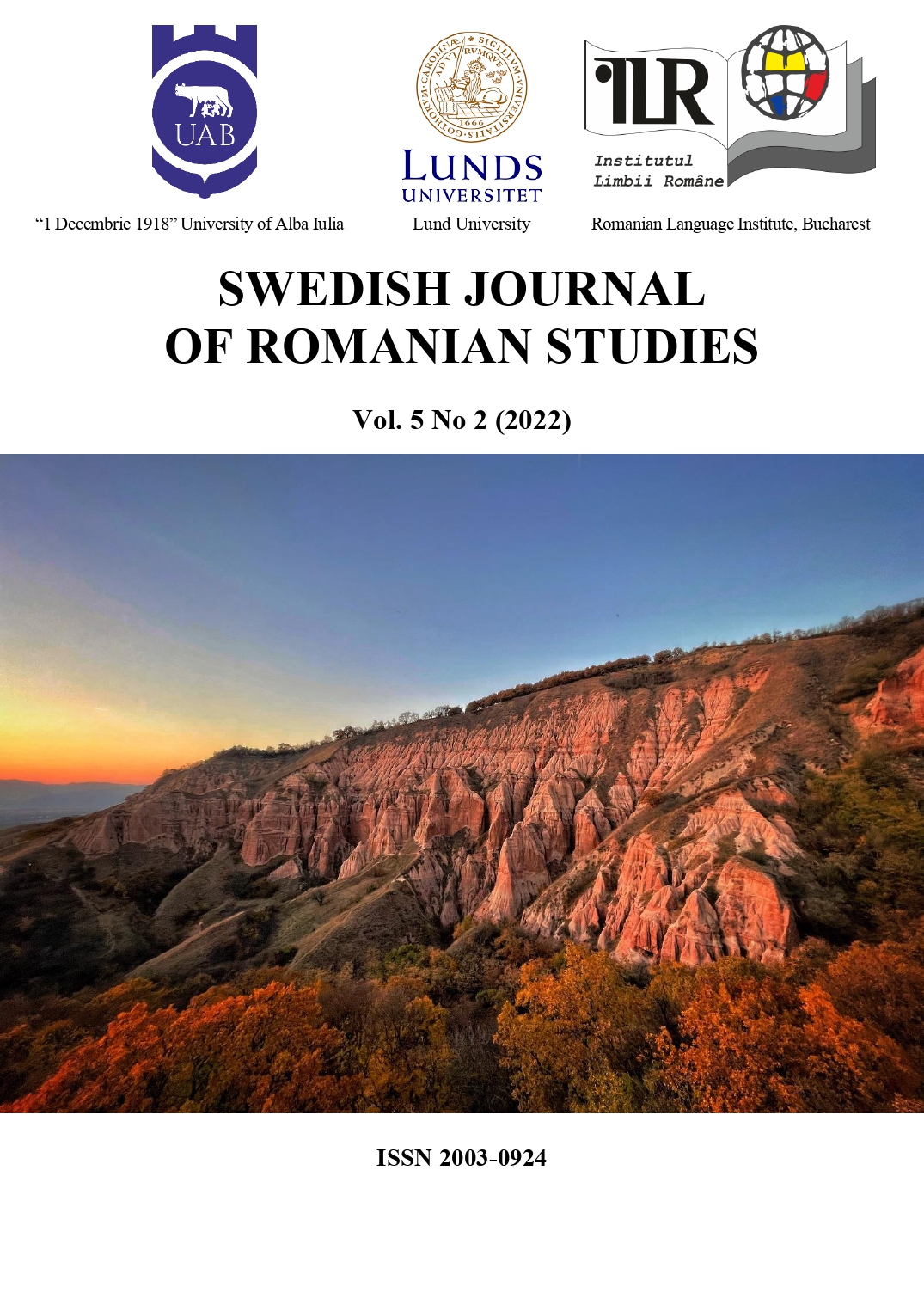
This study is aimed at identifying the most noticeable Slavic elements in the calendar rites of Bukovyna. It analyzes material collected by Romanian researchers in the second half of the 19th – early 20th century (E. Niculiță-Voronca, T. Pamfile, L. Bodnărescu, А. Fochi, A. Zașciuc), documents from the Central Scientific Archive of the Academy of Sciences of the Republic of Moldova, the New Linguistic Atlas of Romania, Moldova and Bukovyna (1987), as well as personal observations recorded by the authors of the study in Ukraine and Romania during ethnographic expeditions. In the calendar rites of the Romanians of Bukovyna, some clear Slavic elements can be identified, such as some names of calendar holidays, Ukrainian elements in such rites as koliada, the Christmas star, shchedruvannya. Ukrainian motifs of musical folklore in winter rites, as well as the use of the names of Ukrainian opryshky and haidamaky, the adaptation of the “walking with vertep”, the use of the term vidma of Ukrainian origin, the penetration of the name and main text of the Ukrainian Malanka, etc.
More...
This paper aims to reconstruct the way in which the Romanian written culture from the second half of the eighteenth century and the beginning of the nineteenth gradually built the image of the Russian Enlightened monarchy with three of its most famous representatives: Peter II, Catherine II and Alexander I. By means of translating from Italian and German historiography, these texts served a double goal: on the one hand they satisfied the reader’s need for knowledge and understanding of the contemporary events, and on the other they contributed to a political discourse that viewed Russia and the Russian Orthodox monarchy as potential saviours of the Romanian principalities from the oppression of the Muslim Ottoman Empire. By means of translation analysis, we have attempted to illustrate how the Western image of an Eastern monarch, guided by a blend of Western philosophy and Eastern Orthodox tradition, was transferred in the Romanian culture as a scientific base for political and cultural decisions.
More...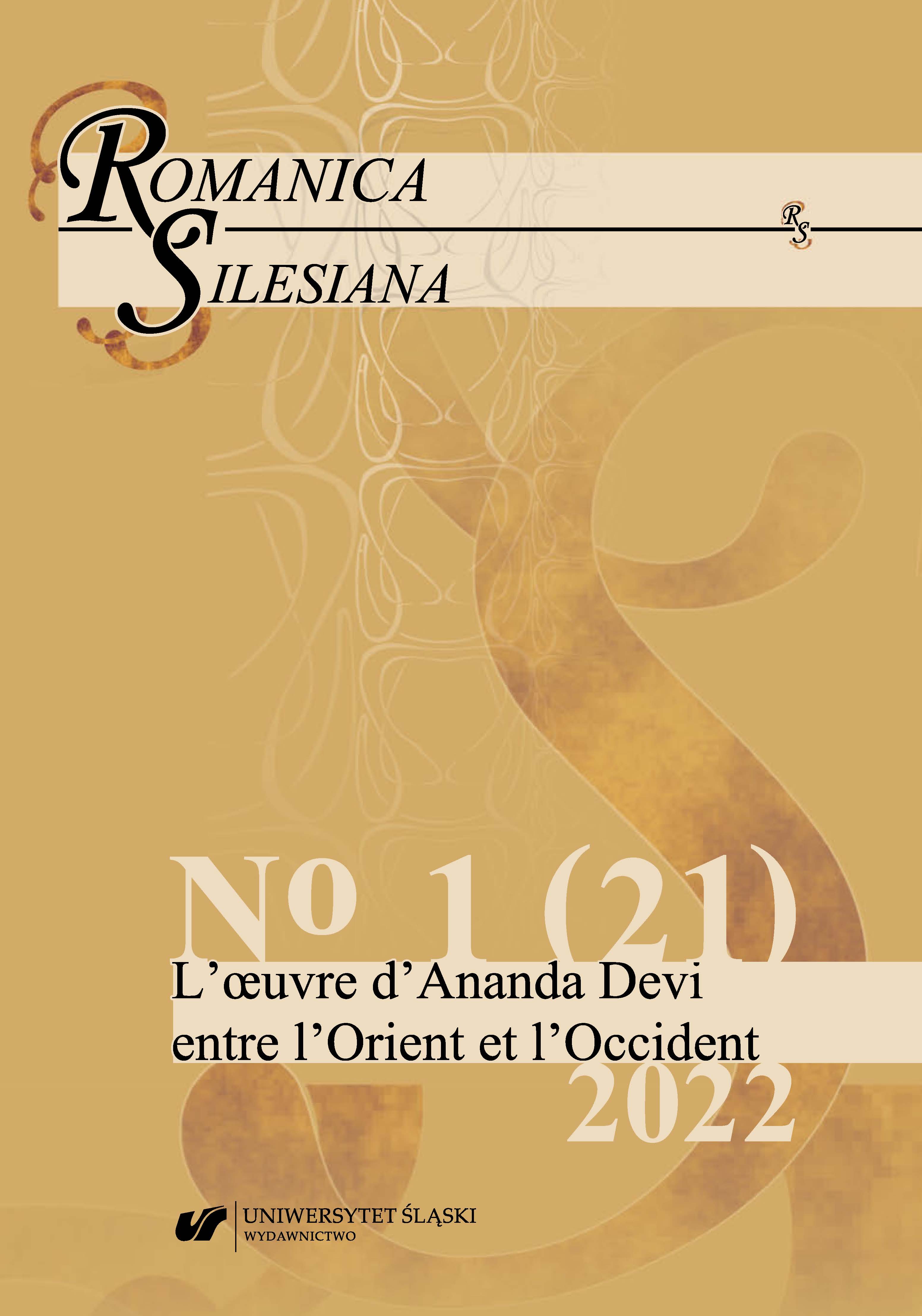
In her novels, Ananda Devi has always known how to immerse us in texts ennobled by local paintings where matrix India appears through the representation of a Cosmogonic universe dominated by magico-spiritual symbolism. Certain homogeneous interpretations, the fruit of historical constructions, obscure, even sometimes neglect, the deeply rooted heterogeneity of Indian traditions in Mauritius. This “bipolar contrast” (Sen, 2007), the sum of imaginary splices and cultural inter-fusion, nevertheless constitutes the humus of the Mauritian identity built over the course of colonial history. The author then illustrated herself through her writings as a major figure in this form of binary representation of the Mauritian universe. Our study aims at revealing the imaginary amalgams that circulate in Devis texts, starting from forms of discourse and knowledge surreptitiously disseminated in motifs such as the “sari” and “the hair”. By relying on an ethnocritical analysis grid, we will show how the Devi’s ethnotexts (Motsch, 2000), manage by a meiotic effect, to shape a “new humanism” at the antipodes of “orientalist representations” (Said, 1978) and ethnocentric of India as seen by the West.
More...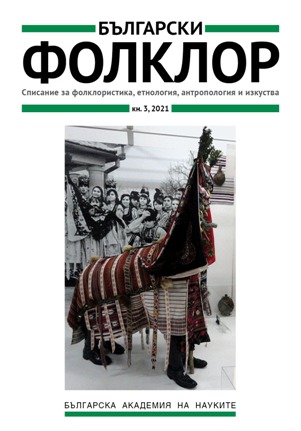
The article studies the winter masquerade custom of Turka, as the central object of investigation is its variant from the Romanian village of Cuciulata in Transylvania. In the course of more than a century, the outlook of this mask has remained almost unchanged. The author offers analyses on the altering functions of the mask as an artefact playing the roles of a ritual object and a museum exponent.
More...
This article explores the changing approaches to the preservation and socialization of cultural heritage. The analysis of the normative documents of the leading international organizations in the field of cultural heritage – from the 50s of the twentieth century to the present day – shows a slow transition to the integration of people and communities in the processes of its preservation. This transition has three main phases: from separation of people and communities from the heritage, through awareness and access to it, and finally, to inclusion in the decision-making process concerning cultural heritage protection. The article also examines where Bulgaria is in this process and how these changes in cultural policies affect the mechanisms of protection of our cultural heritage.
More...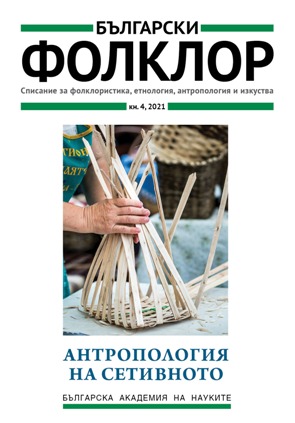
The article offers observations and preliminary notes from the study of cultural heritages with a focus on sensory images and their perception, expression, and communication. Sensory and visual anthropology are applied as research tools in the context of their complementarity and adequacy in regards with specific spheres of study. The author presents some results of her fieldwork in the form of visual archives and short anthropological films, which give further knowledge of the senses and their instrumentalisation for the generation of meanings and values.
More...
The paper describes the results from the research project “Sensory Ethnography of the City”. The authors discuss some aspects of the theoretical and practical models for the application of the sensory-ethnographic approach in urban studies. The focus of the study is on some multi-sensory aspects of the communication between people with disabilities and institutions. The field research in the framework of the project developed innovative methods, elaborated a theoretical model of the sensory aspects of the relationships between disabled people and institutions, and mapped the places where the citizens meet the administration. The final results of the project were a sensory exhibition, a conference, a book and a round table.
More...
The aim of the article is to outline and analyse the relationship between fashion and cultural heritage as a source of inspiration for fashion designers. Several examples of French fashion houses are considered, and fashion as art is discussed. In the highly competitive context of modern global fashion and luxury industry, creative practices and processes can be viewed in direct connection with cultural heritage. The interaction between cultural heritage and the creative process is strategic. It works at all levels and includes all components of the production chain, integrating the creation, design, production, and communication. Fashion designers, along with their aesthetic canons, rediscover archetypes, values and imagination, but rethink them in an appropriate, concrete and creative way. The designers offer new visions and meanings, as they experience original processes and approaches. Furthermore, they introduce social, political and cultural issues into the design philosophy, apply new craft skills in the design process or even utilize music and youth culture into the heritage of brands. In this way, cultural heritage is rediscovered as a modern and contemporary design.
More...
The article discusses notions referring to the ruler and his body according to the pagan views of the Bulgarians in the epoch before Christianity was adopted in the Bulgarian lands. Drawing on written sources and material evidence, an attempt is made to interpret ideas, signs and objects which form the system of the ruler’s ideology. Typological similarities are pointed out between the ruler’s ideology of the Bulgarians and that of the peoples of the Eurasian Steppes, Central Asia, and with other peoples from the Migration period.
More...
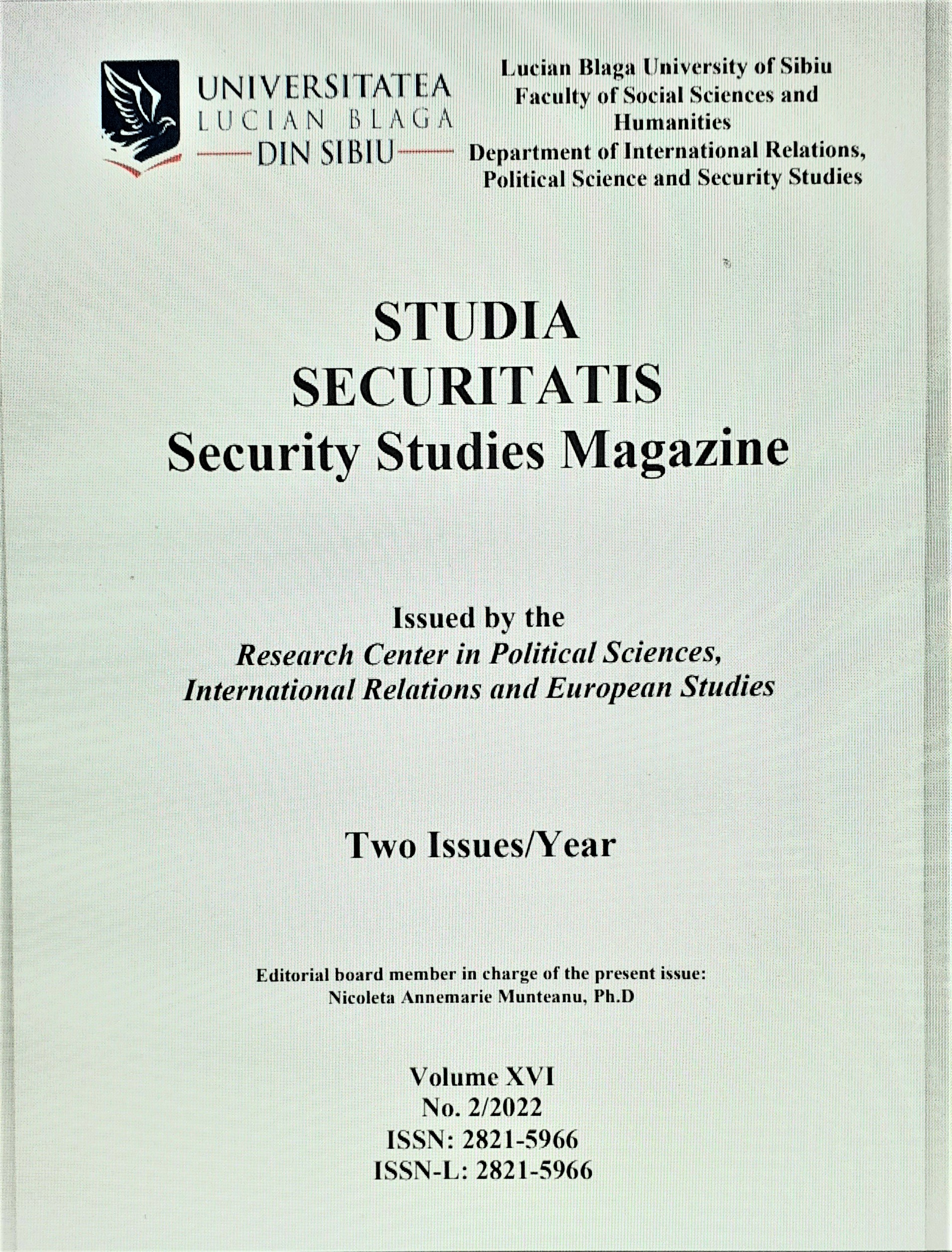
The recent minorities in Sibiu are at an early stage in the development of organizational structures, trying to make their voice heard regarding certain issues that affect its members.This policy paper aims to facilitate the offer of public policies solutions for the recent minorities in Sibiu: Arab, Bessarabian, Ukrainian, and Chinese, to identify solutions that may have a common denominator, to establish a way of cooperation, and to inspire the development of joined projects. As a result of the workshop, the policy paper will be sent to the institutions and authorities with attributions in this field.
More...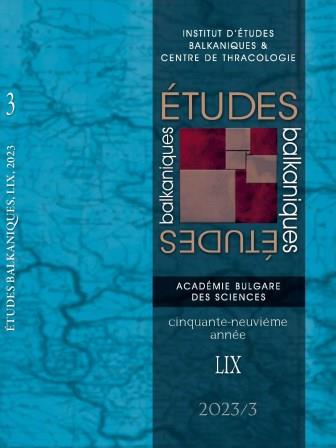
After 1517 the Holy Places of Jerusalem, Palestine and Sinai as well as the three ancient Eastern Patriarchates of Alexandria, Antiochia and Jerusalem were included into the imperial domain of the Sublime Porte thus connecting its Orthodox subjects in Rumelia, Greek islands, Asia Minor and the Danubian Principalities to the most worshipped common Christian shrines. In the following two centuries the number of the pilgrims to the Holy Land from the Ottoman Balkan provinces was permanently increasing. The South Slav pilgrims’ glosses and travel notes reveal the shaping of the common orthodox space, the parts of which were the visitors’ living places, sacral centers, monasteries and travel communications. The pilgrimage to Jerusalem and the return back lead them across administrative, canonical, ethnic and territorial metes and bounds creating in their minds the image of the Ottoman Empire as mighty world power with multinational and multi-confessional population thus laying foundations for the development of protonational identities.
More...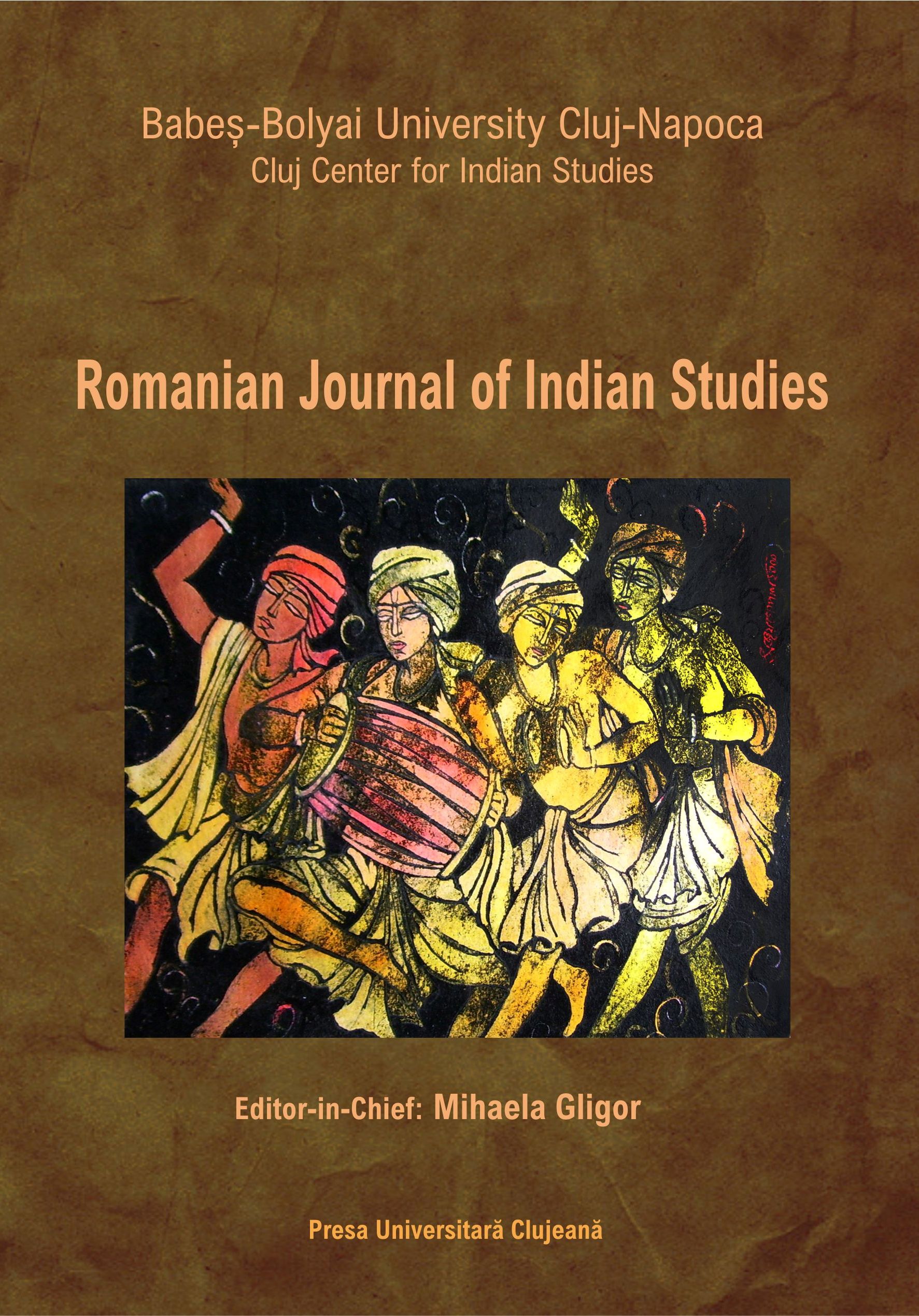
When discussing such a complex concept as culture, it is forever interesting, even surprising, to find out what definitions people give to this all-encompassing notion; what better way to delve into Indian culture and the inner workings of cultural diplomacy and relations than to speak to someone most knowledgeable in the field, the Ambassador of India to Romania, Moldova and Albania, Mr. Rahul Shrivastava. His Excellency was kind enough to sacrifice his time in favor of cultural matters, despite his busy schedule.
More...